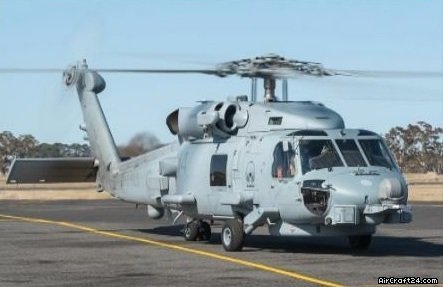Rotary-Wing Airplane Offering Superior Longevity and Precision Design
In the realm of aviation, rotary-wing aircraft have long been acknowledged for their distinct abilities in different functional environments. As we explore the intricate equilibrium in between development and integrity in rotary-wing airplane, it ends up being apparent that the convergence of cutting-edge modern technology and tested style principles has actually set a brand-new requirement for performance and performance in the aerospace market.
Evolution of Rotary-Wing Technology
Throughout the background of aviation, the advancement of rotary-wing innovation has been a testimony to consistent development and innovation in aeronautical engineering. From the very early days of vertical trip with basic layouts to the advanced helicopters and other rotary-wing airplane of today, the development in this field has actually been remarkable.
In the very early 1900s, pioneers like Igor Sikorsky and Juan de la Cierva made substantial strides in rotary-wing technology. Sikorsky's VS-300 helicopter, initial flown in 1939, marked a zero hour in the growth of useful rotary-wing airplane. This success led the means for additional innovations in vertical trip capabilities.

Today, rotary-wing aircraft play vital duties in numerous fields, consisting of army procedures, emergency situation medical services, police, and commercial transportation. The development of rotary-wing innovation proceeds to press the limits of what is feasible in upright trip, making certain that these aircraft continue to be indispensable assets in the air travel market.
Products and Building And Construction Innovations
Demonstrating a blend of innovative materials and exact construction strategies, rotary-wing aircraft have actually gone through substantial improvements in resilience and efficiency. One of the crucial innovations in materials made use of for rotary-wing aircraft is the raising usage of composite products.
Additionally, the assimilation of advanced layers and surface therapies has actually played an important role in improving the longevity of rotary-wing aircraft. These layers offer defense against rust, abrasion, and severe weather, expanding the lifespan of the aircraft and minimizing upkeep demands.
In regards to construction innovations, additive manufacturing, additionally called 3D printing, has revolutionized the production of complicated components for rotary-wing airplane. This technology allows for quick prototyping and customization, bring about faster growth cycles and reduced costs. In general, the constant evolution of products and building and construction techniques is driving the capabilities and performance of rotary-wing aircraft to new heights.
Precision Trip Control Systems

The assimilation of GPS innovation further boosts the accuracy and integrity of these systems, enabling specific navigation, waypoint monitoring, and automated flight control. sikorsky s 70. This degree of precision not just enhances the security of rotary-wing procedures however additionally enhances total operational performance and mission efficiency
Moreover, the constant advancements in expert system and device understanding have assisted in the development of self-governing trip capabilities within Precision Trip Control Equipment. This enables rotary-wing airplane to execute complex objectives with unparalleled accuracy and uniformity, making them indispensable assets in a large range of applications, including armed forces procedures, search and rescue goals, and aerial photography.
Toughness in Testing Environments
Sought after operational setups, rotary-wing airplane show remarkable durability and toughness, making certain optimal performance under challenging environmental conditions. These aircraft are created to hold up against a wide variety of environmental factors, including extreme temperatures, high winds, and rough terrain, making them well-suited for different objectives in diverse landscapes.
One essential element adding to the toughness of rotary-wing airplane is their sturdy building and construction. These aircraft are built using high-quality materials and progressed design strategies to boost their architectural stability and dependability. Furthermore, elements such as rotor blades, engine systems, and landing gear are meticulously made to withstand the strains and stresses encountered throughout procedures in difficult atmospheres.
Furthermore, rotary-wing airplane are outfitted with innovative onboard systems that keep an eye on performance metrics in real-time, permitting proactive maintenance and very early discovery of prospective issues - sikorsky s 70. This proactive approach aids stop unforeseen failures and makes certain the ongoing airworthiness of the aircraft sought after operational setups. In general, the resilience of rotary-wing airplane in tough atmospheres is a testament to their premium engineering and design, making them crucial properties for numerous mission-critical operations
Maintenance and Integrity Requirements
The adherence to stringent upkeep and reliability criteria is extremely important in guaranteeing the optimum performance and safety and security of rotary-wing aircraft. Routine upkeep checks, carried out by qualified specialists, are essential to determine and resolve any possible issues before they endanger the airplane's functionality. These checks include a comprehensive evaluation of all essential components, including the engine, blades system, avionics, and hydraulic systems, to assure that they are in prime working problem.
Moreover, adherence to scheduled maintenance periods in conformity with manufacturer guidelines is vital for promoting the aircraft's reliability. This positive technique check that aids prevent unexpected break downs and makes sure that the airplane continues to be airworthy for its desired goals. Additionally, the implementation of robust anonymous dependability requirements, such as regular part screening and substitute based upon fixed lifecycles, better enhances the aircraft's dependability.
Conclusion

To conclude, the developments in rotary-wing aircraft innovation have resulted in remarkable toughness and accuracy engineering. With ingenious materials and building techniques, along with precision flight control systems, these airplane can run in tough settings with raised integrity. The upkeep and integrity standards make certain that these rotary-wing airplane proceed to do at their finest, making them necessary possessions for different markets.
Demonstrating a fusion of advanced materials and precise construction techniques, rotary-wing airplane have undergone significant innovations in toughness and performance. One of the key technologies in materials used for rotary-wing airplane is the boosting usage of composite products.With careful interest to information and advanced technological assimilation, rotary-wing aircraft have welcomed Precision Trip Control Solution as a keystone of their functional excellence. On the whole, the sturdiness of rotary-wing aircraft in tough atmospheres is a testimony to their premium engineering and layout, making them important assets for numerous mission-critical operations.
In conclusion, the improvements in rotary-wing aircraft innovation have led to remarkable resilience and accuracy engineering.